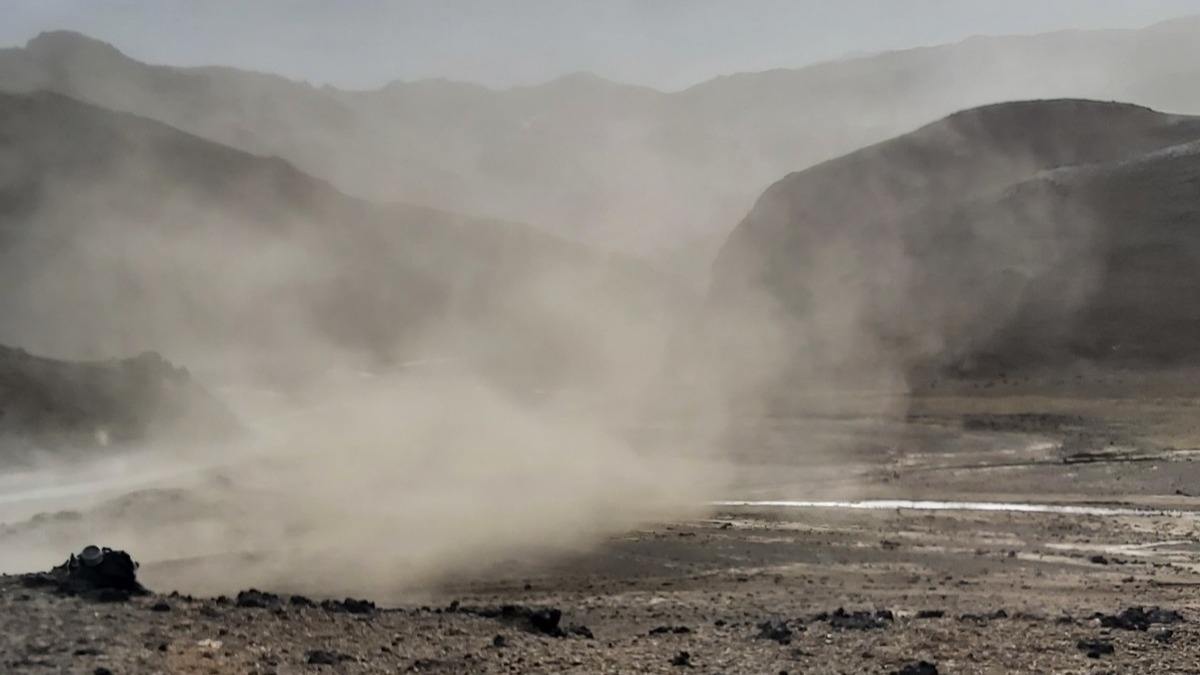Researchers found a climatically and environmentally significant northern high latitude dust belt

Identifying the locations of local dust sources and their emission, transport, and deposition processes is important for understanding the multiple impacts of high-latitude dust on the Earth's systems. Recent study, published in Atmospheric Chemistry and Physics, provides a step forward to improve the representation of high latitude dust in models. The results also help to monitor, quantify, and assess the environmental and climate significance of high latitude dust. Researchers identified and quantified the source intensity values for 64 new northern and southern high latitude dust sources. Previously, the global dust belt has been identified by Professor Prospero, USA, and his colleagues, in 2002. The global dust belt is defined as extending into the Northern Hemisphere from the western coast of northern Africa over the Middle East (western Asia), central and East Asia and southwestern North America, with only minor sources in the Southern Hemisphere. The most significant global dust belt sources include, for example, the Saharan desert.
The spatial dust source distribution analysis modeling results showed evidence supporting a northern high latitude dust belt. It was defined as the area north of 50∘ N, extending in Eurasia at latitudes 50–58∘ N and north of 60∘ N, and in Canada at latitudes 50–55∘ N and north of 58∘ N. The most significant high latitude dust sources include, for example, Iceland.

High latitude dust and climate change are linked together
Mineral dust is an essential and relevant climate and environmental variable with multiple socioeconomic effects on, e.g., weather and air quality, marine life, climate, and health.Dust is often associated with hot, subtropical deserts, but the importance of dust sources at the cold, high latitudes has recently increased.
Research shows that high latitude dust aerosols consist of a variety of different dust particle types with various particle sizes and shape distributions as well as physical, chemical, and optical properties that differ from the crustal dust of the Sahara or American deserts. Therefore, their impacts on climate, environment, and human health can differ from those of low latitude dust.
For example, Icelandic dust is of volcanic desert origin, often dark, and has higher proportions of heavy metals than crustal dust. Light-absorbing high latitude dust particles can induce direct effects on solar radiation fluxes as short-lived climate forcers and snow optical characteristics impacting cryosphere melt via radiative feedback. High latitude dust significantly affects the formation and properties of clouds.
Climate change can cause a decrease in the duration of snow cover, retreat of glaciers, and an increase in drought, heatwave intensity, and frequency. This can lead to the increasing frequency of topsoil conditions favorable for dust emission, which increases the probability of dust storms.
The study showed a significant difference in the deposition of dust and black carbon
Using the global atmospheric transport model SILAM of the Finnish Meteorological Institute, the researchers estimated that about 57% of the dust deposition in snow- and ice-covered Arctic regions was from high latitude dust sources. In the southern high latitude dust region, soil surface conditions were found favorable for dust emission during the whole year.
Compared to the deposition of black carbon (anthropogenic sources and wildfires combined onto snow and ice), the deposition of fine Arctic dust is about 70% higher globally and around 580% higher in the Arctic regions.
While these figures provide a general quantification of the deposited amounts, detailed calculations of the thermal and optical properties of dust and black carbon deposited on snow are required to compare the deposited substances' net impacts on the climate.
Total of 56 researchers from 15 countries participated to the article published in the special issue of “Arctic climate, air quality, and health impacts from short-lived climate forcers (SLCFs): contributions from the AMAP Expert Group” in Atmospheric Chemistry and Physics. The work was supported by Ministry of Foreign Affairs of Finland (IBA project no. PC0TQ4BT-25).
Further information:
Northern high latitude dust belt and the significance of high latitude dust on climate and environment: Outi Meinander, Docent (adjunct professor), PhD, Senior research scientist, Finnish Meteorological Institute, outi.meinander@fmi.fi
Emission, long-range transport and deposition modeling of dust and black carbon: Andreas Uppstu, PhD, Senior research scientist, Finnish Meteorological Institute, andreas.uppstu@fmi.fi
SILAM model and its multiple potential in atmospheric research: Professor Mikhail Sofiev, Finnish Meteorological Institute, mikhail.sofiev@fmi.fi
Scientific article is open access and available in Atmospheric Chemistry and Physics.
Reference:
Meinander, O., Dagsson-Waldhauserova, P., Amosov, P., Aseyeva, E., Atkins, C., Baklanov, A., Baldo, C., Barr, S. L., Barzycka, B., Benning, L. G., Cvetkovic, B., Enchilik, P., Frolov, D., Gassó, S., Kandler, K., Kasimov, N., Kavan, J., King, J., Koroleva, T., Krupskaya, V., Kulmala, M., Kusiak, M., Lappalainen, H. K., Laska, M., Lasne, J., Lewandowski, M., Luks, B., McQuaid, J. B., Moroni, B., Murray, B., Möhler, O., Nawrot, A., Nickovic, S., O’Neill, N. T., Pejanovic, G., Popovicheva, O., Ranjbar, K., Romanias, M., Samonova, O., Sanchez-Marroquin, A., Schepanski, K., Semenkov, I., Sharapova, A., Shevnina, E., Shi, Z., Sofiev, M., Thevenet, F., Thorsteinsson, T., Timofeev, M., Umo, N. S., Uppstu, A., Urupina, D., Varga, G., Werner, T., Arnalds, O., and Vukovic Vimic, A.: Newly identified climatically and environmentally significant high-latitude dust sources, Atmos. Chem. Phys., 22, 11889–11930, https://doi.org/10.5194/acp-22-11889-2022, 2022.

